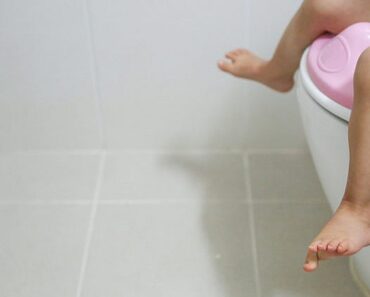Have you heard about the French and their vaginas?
In France, any woman who has delivered a baby gets a prescription for 10 free physical therapy sessions to “re-educate” her pelvic floor—you know, that collection of muscles, ligaments, tendons and fascia that supports your pelvic organs, helps you have enjoyable sex and stops you from peeing in your pants.
Emily Mazo-Rizzi, an American who has lived in Paris for nearly 20 years, happily took advantage of this government-funded rehabilitation when her first baby was born in 2012. “I have no desire to be incontinent or have a prolapsed uterus or bladder,” says the Pilates instructor who just had her second child in France.
The appointments, which started around six weeks postpartum, went like this: A specially trained midwife, wearing a medical glove, stuck her finger into Mazo-Rizzi’s vagina to feel what was going on while Mazo-Rizzi attempted to contract and squeeze different parts of her pelvic floor muscles. After every session, she was sent away with homework, which usually involved three exercises. When her newborn is six weeks old, she will begin therapy again.
“In France, most women do it,” says Caroline Mollard, a physiotherapist in Paris who specializes in pelvic floor and perineal rehabilitation. “Most of them have talked to friends who have done it, or moms or grandmas tell them to do it because they have problems controlling their urine.”

Relearning how to pee After the six-week mark, French women (and those from other European countries where such therapy is funded) are encouraged to follow up with a physiotherapist or midwife twice a week for about a month and a half. Some healthcare providers, like the one assigned to Mazo-Rizzi, give manual therapy (also called visceral massage), a type of internal massage that involves working out any tension and scar tissue and physically feeling the woman contract her muscles. Other pelvic floor therapists use what Mollard can best describe as “a sort of dildo” that goes inside the vagina and either uses electricity to force you to squeeze or connects to a video game that you play by doing Kegels and engaging your pelvic muscles.
If 10 sessions aren’t enough to fully rehabilitate a woman’s pelvic floor, she is sent back to her gynaecologist to write another prescription and the sessions continue. Once the therapy is done to the satisfaction of the therapist, she starts 10 sessions of abdominal muscle rehabilitation to fix diastatis recti (the separation of the abdominal muscles) and regain core strength. This tummy work is also fully covered by the French healthcare system.
New moms are told not to exercise until they’ve completed their pelvic floor and abdominal retraining. “They are motivated so that they can start exercising and getting back in shape,” says Mollard.
While new French moms are engaging in this intensive postpartum therapy, Canadian women are generally left with their pelvic floors hanging. Take Toronto mom Sylvia Vickers*, for example. She had a bit of an “oops, I did it again” feeling when a wee bit of pee would leak out with a sneeze, laugh, cough or other sudden movement after her daughter, Samantha* was born in 2015.
She considers herself a pretty avid researcher, but she had never heard of pelvic floor physiotherapy until a friend tipped her off. “I did a lot of research before Samantha was born,” she says. “I was on all the mom blogs, but I never came across it.”
She started seeing a physiotherapist about four months after Samantha was born, but it was a long haul. By the time she went back to work after her maternity leave, she still wasn’t cleared by the therapist to start running or playing Ultimate Frisbee—two activities that she enjoyed pre-pregnancy. When she got pregnant with her second baby, the urine leakage came back. “I’d really like to not pee my pants every day,” says Vickers, whose second child is due in March. (Vickers signed up for a couple prenatal sessions this time around and plans to return at the six-week postnatal mark.)
Mary Wood, a pelvic health physiotherapist in Edmonton, isn’t surprised by the lack of awareness in North America. “We’ve seen a huge increase in women in our clinic from 10 years ago, both prenatally and postpartum, but we’re seeing a small percentage of all births,” she says. “Women usually find out about us from a friend of a friend.”
So if we don’t get free pelvic floor work like the French, what’s a Canadian gal to do?
First up, says Julia Di Paolo, a pelvic health physiotherapist in Toronto, is to know more about that whole area. “We are so out of touch with our pelvic floors and vaginas,” she says. “Many women have never looked at their vulvas. That’s shocking when you consider that it’s a really important part of your body in terms of stability but also in terms of pleasure.” Women often don’t realize that sexual pain, ongoing constipation and other bowel issues can be a result of pelvic floor dysfunction.
If you’re thinking about getting pregnant or are pregnant and you’ve had urine leakage, sexual pain or chronic constipation, you should see a pelvic health physiotherapist as soon as possible, says Wood. During pregnancy, you may want to see one if you have pelvic or back pain.
Di Paolo says that she loves getting women into her clinic during pregnancy—or even before conception—to go over the proper way of doing Kegel-style exercises. Many women do them wrong. Di Paolo says to imagine picking up a blueberry, not a piano, with your vagina and drawing it up and into your body. “It’s a lift, through the anus and pelvis,” she says. It’s also important to relax your pelvic floor afterwards. “Many women are working too hard,” says Wood. “It would be like doing a biceps curl and never straightening your arm again.”
If you see a therapist during pregnancy, she can also help you learn how to breathe properly and push during labour—something that Di Paolo says we generally don’t talk about or practise in Canada. “Pushing is a lengthening of the pelvic floor,” she says.
If you want to see a physiotherapist after delivery, it might be prudent to contact one and set up an appointment during pregnancy because many have waiting lists. Most provinces have a roster of pelvic floor physiotherapists, says Marie-Josée Lord, a Canadian pioneer in this area who trains others. Make sure that you’re dealing with someone who has received specialized training. Although the specialty is gaining popularity among therapists, you might be hard-pressed to find one in smaller cities and towns across Canada. Atlantic provinces, as well as Manitoba, are also lagging behind the rest of the country in terms of having these specialized trained therapists available, says Lord.
Whether or not you plan to see a therapist, start doing Kegel exercises once you feel ready after you’ve delivered your baby (though you should wait at least 24 hours). In terms of real pelvic floor physiotherapy, you can start six weeks after your baby is born, but Wood says that not everyone needs treatment at this point. Sometimes she will check a women and confirm that she is good to go. But the problem is that, oftentimes, no one is checking. Both Wood and Di Paolo wish that gynaecologists and midwives would incorporate internal exams when they check external healing at the six-week checkup to look for any residual internal scarring or control issues and make sure that women are doing Kegel exercises properly.
However, there are instances where you may need a physio assessment, says Wood. If you have a third- or fourth-degree tear, unresolved back pain, ongoing sexual pain, difficulty controlling your bowels or gas after six or seven weeks postpartum, or bladder leakage that is not improving, you could benefit from some therapy.
Some provinces have programs that will pay for pelvic floor physiotherapy, but that’s only after you have a problem, such as pelvic organ prolapse. Prevention is always better, says Di Paolo, but that means you’ll have to pay out of pocket or through extended health benefits. “My suggestion is to ask for this as a push present,” she says.
If you see a physiotherapist, she will let you know when it’s safe to start exercising again. Take note: We often start working out way too soon in this country. “Our bodies were designed for this,” says Di Paolo, “but they weren’t designed to go back to hardcore exercises six weeks later. We need to honour that recovery time.”
Looking back on the births of my three children, I was woefully uneducated about my pelvic floor. I’m glad that awareness is increasing, but, as a country, we could do a lot more to support women and their nether regions during and after childbirth.
So let’s all raise—and lower—our pelvic floors to France for being progressive in this area and teaching women around the world a little bit about this neglected body part.
*Name has been changed.
This article was originally published online in February 2018.
Read more:
8 ways to give your pelvic floor some love
Vag exercises are my “me time”

































